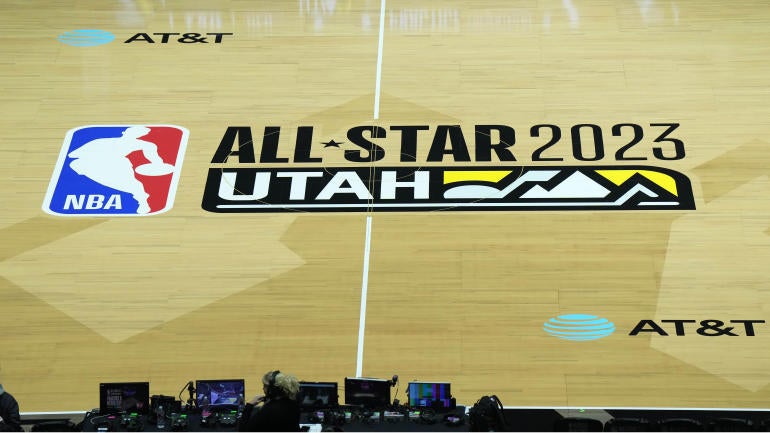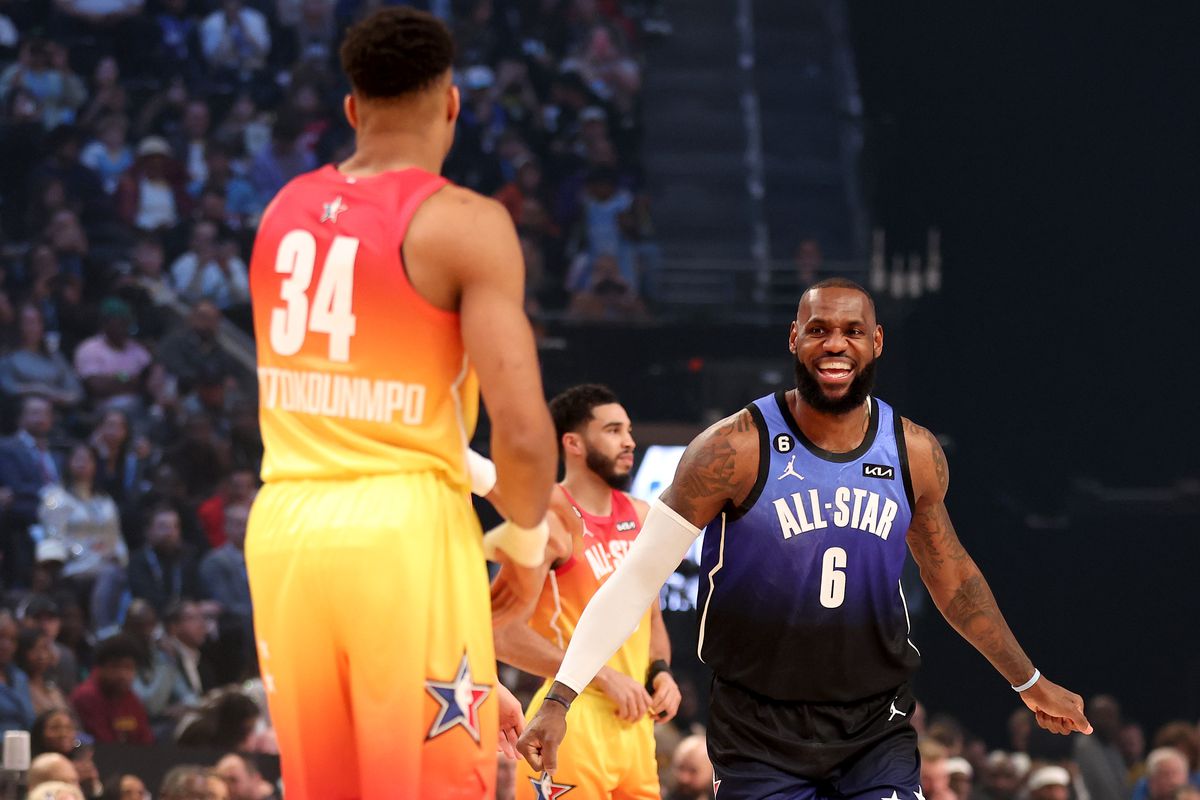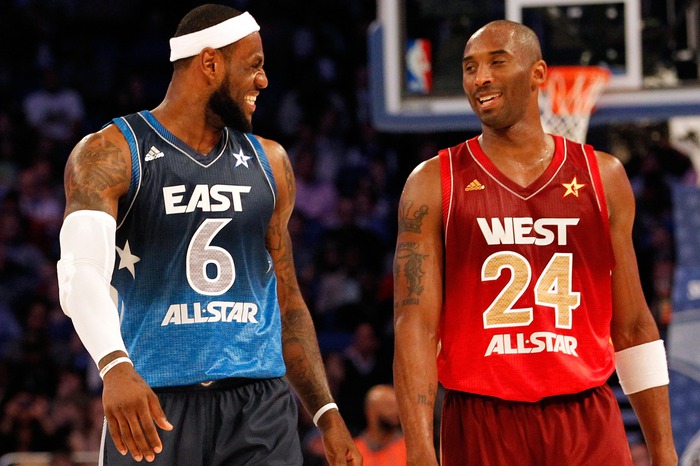The NBA can’t stop tinkering with the All-Star Game. In 2018, it added the All-Star Draft to try to spice up the event. In 2019, it decided to televise that draft to let fans in on some of the fun that had previously taken place over the phone. In 2020, the Elam Ending was added to try to make the closing act of the game more competitive. Now, with the 2024 All-Star Game in Indianapolis looming, the league has decided to revert to the original East vs. West format while dumping the Elam Ending in the process.

The decision is perplexing in that it is essentially an admission of defeat. The league wouldn’t axe the All-Star Draft or the Elam Ending if it thought they were working. Whether or not they were is ultimately debatable, but at the very least, they produced two bits of genuine NBA history. The 2020 All-Star Game, decided by two points with the Elam Ending format, is widely regarded as a classic, and even if the league would prefer to avoid such moments, the 2022 draft in which Kevin Durant went to great lengths to avoid drafting James Harden, who had been traded by his Brooklyn Nets earlier in the day, was one of the funniest pieces of basketball-related television ever produced. Even LeBron James couldn’t stop laughing.
No matter where you fall on the All-Star updates of the past several seasons, one thing is obvious: the league wouldn’t have instituted those changes in the first place if it felt like the old format was working. Maybe the Elam Ending and the draft were failures, but it’s not as though the league was thrilled enough with the original approach to keep it in 2018. The goal of changing it again may have been to inject some more effort into a game that, last season, featured very little of it, but it’s not as though the All-Star Game featured much defense in the past. In an era in which players switch conferences frequently, there aren’t going to be built-in rivalries to fuel the game.
The NBA has never found a format that has consistently convinced its best players to take its marquee exhibition game seriously. So why not try something new? Well, not entirely new. Between 2015 and 2021, the Rising Stars Challenge featured a battle between the best rookies and sophomores in the NBA. They were divided into two teams: one representing the United States and another representing the rest of the world. This is the ideal format for the All-Star Game.
The NBA is an increasingly global league. The last five MVPs have been won by players born in foreign countries. Four of last season’s five First-Team All-NBA choices were as well. Last year’s All-Star Game featured eight international All-Stars: Nikola Jokic, Joel Embiid, Giannis Antetokounmpo, Luka Doncic, Shai Gilgeous-Alexander, Pascal Siakam, Domantas Sabonis and Lauri Markkanen. How long will it be before we regularly achieve an even split? Probably not much longer, as all eight of those players are in their 20s and Victor Wembanyama is looming as a perennial option.

There is no way to create guaranteed effort on the part of the stars, but putting a bullseye on Team USA’s back is probably a good place to start. Foreign players frequently talk about wanting to play against Team USA in international competitions and how meaningful it is to beat them. LeBron James took such offense to Team USA’s failure to medal at the FIBA World Cup that he decided to suit up himself for the 2024 Olympics and is trying to bring the league’s biggest stars with him. Pride on the international stage is a powerful thing. All-Star Games could help generate rivalries that lead into FIBA competition and vice versa.
The stylistic contrast between the two sides doesn’t hurt either. Six of those eight international All-Stars last season are forwards and one of the guards, Dončić, is 6-foot-7. Team USA tends to be better at producing guards while the rest of the world tends to do better with bigger players. If styles make fights, watching both sides try to deal with the other’s very different sort of roster would probably be pretty entertaining, and because a player’s nation of origin doesn’t change, the rosters would be stable enough to make the matchups feel like part of a series. As a result, real history could develop within these games.
The biggest concern here is Team USA’s depth advantage. While the rest of the world is doing a great job of producing stars, it simply has a smaller player pool to pick from within the NBA ranks. The theoretical problem here is that enforcing the same number of All-Stars on both sides could initially lead to some unworthy international players getting selected over Americans. Eventually, that could flip with too many Americans getting chosen. Being chosen as an All-Star matters. It plays a part in contract negotiations, endorsements and Hall of Fame cases. In a perfect world, we’d want the correct 24 players chosen every year.

It’s worth noting at this point that that’s rarely the case. How many great players from the past two decades never made All-Star teams because they played in the stronger Western Conference? C.J. McCollum is still waiting to be chosen. Mike Conley only made it as an injury replacement. It’s safe to say both were worthier than Jamaal Magloire.
There is a potential workaround here, though it would mean going above the typical 24 selections. The league could simply name its 24 best players at the All-Star break. From there, the team with fewer choices could fill out its ranks with the next best available players. Imagine a scenario in which one side had 14 players selected while the other had 10, for instance. The side with 10 could simply add the next four best players eligible to play for them and even out the rosters at 14 apiece.
The All-Star Game fundamentally exists for two reasons. Its stated purpose is to be the most fun possible exhibition for the fans and a showcase for the league’s best talent. The actual purpose, as is the case for everything any professional sports league does, is to generate revenue. A Team USA vs. World format accomplishes both better than anything else the league has ever attempted.
The league’s best players aren’t the ones who might lose All-Star spots by switching to this format. American All-Stars No. 13-16 might be in danger, but those aren’t the players that fans want to see anyway. LeBron James and Stephen Curry are going to be chosen through fan voting no matter what. Wouldn’t the fans rather see them play in a game that has a chance to be competitive than in one that, lately, has been rather dull? And shouldn’t the league want to showcase its best international players as much as possible in the interest in broadening its fanbase outside of the United States?

From a revenue standpoint, that’s what makes this such a tantalizing idea. Fans in other countries would probably relish the opportunity to see players from around the globe take down Goliath. The best American players only play on the same team once every four years, and the rest of the talent at the Olympics is spread in such a way that Team USA always has a tremendous advantage. That’s why the Americans have won seven of the eight available Olympic gold medals since professionals were first allowed to participate in 1992. A format like this is the best possible way to make Team USA sweat consistently. And let’s say Team USA does lose a couple of games in a row. Wouldn’t patriotic American fans be interested in seeing them try to reclaim their crown?
The NBA itself has admitted that it needed to change the way it treats All-Star Games. The new format wasn’t working, but neither did the old one that is replacing it. The league needs to take a bigger swing if it wants to fix this thing, and a battle between Team USA and the rest of the world is the sort of home run idea that might just revitalize an otherwise stale game.